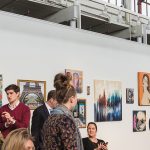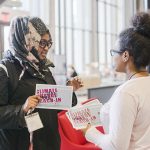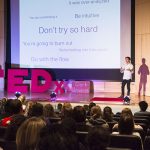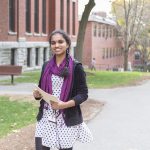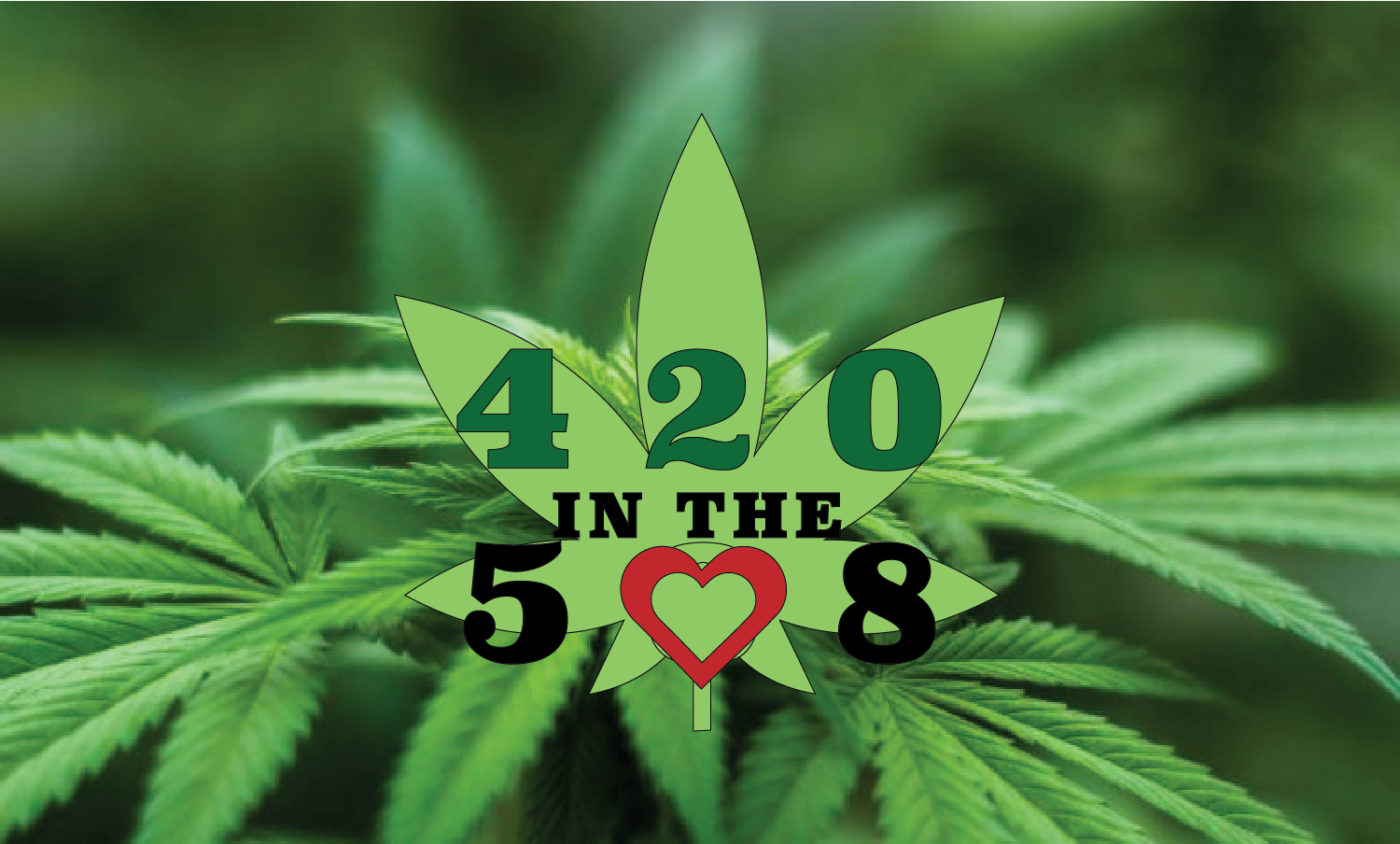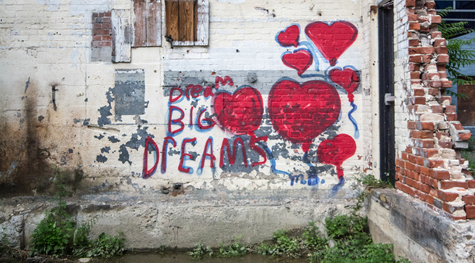
What are the signs of a city renewed? Do you look for revitalization programs? Do you look to the arts?
The economy? The students and colleges? The people within the city? Worcester has been reinventing itself, so we’ve asked some of Worcester’s most active community members to weigh in on what is so special about New England’s second-largest city.
Worcester is a city of renaissance.
“I walk slowly but I never walk backward.”
Abraham Lincoln
This quote might best describe the decades-long, methodical, seemingly disconnected, sometimes frustrating, but always gradual and steady economic development plan in the city of Worcester. Today, through thoughtful planning, public and private investment in our city’s infrastructure, leaders willing to take risks and the collaboration of political, civic and community leaders, Worcester is experiencing a reissuance not seen in generations.
Worcester is a much different place today than it was when I was first elected state representative in the early 1990s. In the early ’90s, our infrastructure was crumbling, residents and businesses were leaving the city, our downtown was suffering the effects of a failed urban shopping mall, highways and abandoned buildings divided our city, the airport was all but defunct, and the lifeblood of Worcester ? our neighborhoods ? was in peril.
Today, where urban blight once defined a city, Worcester is now being recognized for its renaissance and promise; where abandoned buildings once stood, we now have state-of-the-art hospitals, schools, laboratories and technology centers; in a downtown devastated by poor urban planning, we now have a new city map that connects communities rather than dividing us; in neighborhoods that were once tired and rundown, we now see the creation of new, market-rate housing, infrastructure improvements, utility upgrades, sidewalk and street repairs and major investments in our neighborhood parks. Twenty years ago, we were ridiculed as a city without a vision; now Worcester stands as an example of thoughtful, responsible and sustainable urban growth.
In the 1990s, Worcester was at the proverbial crossroads and hoping for that one silver bullet to “make Worcester great” was not the answer. We tried that, and it didn’t work. Worcester needed to develop a vision that included development across the entire city, not just in our downtown. We needed a plan that focused on improving the city’s aging infrastructure, adopting new and creative ways to attract businesses while supporting existing businesses in Worcester and making a commitment to stabilize and improve our city neighborhoods.
The first priority was stemming the erosion of our city core and the degradation of our neighborhoods while developing an urban revitalization plan that supported a grand vision for a 21st-century Worcester. This required city leaders to put aside political rhetoric and commit to the hard work of urban economic redevelopment. Worcester was lucky to have city councilors like Jordan Levy, Ray Mariano, David Forsberg and Paul Clancy, who were not afraid to say YES. By supporting the creation of the Biotech Park, expansion of the UMass Medical School, the controversial Med-city project, funding for Union Station, the connection of the Mass Pike to Worcester through the Route 146 Interchange Project and a commitment to support the Worcester Regional Airport, they set the table for future economic development in our city.
I now serve as chairman of the Worcester Redevelopment Authority (WRA), where I work hand-in-glove with City Manager Ed Augustus and Mayor Joe Petty on a development plan that seeks to build upon recent foundational projects in an effort to bring a transformative vision of a 21st-century Worcester to fruition. Today, Worcester is experiencing a period of historic and unprecedented growth. In just the past few years, the level of public and private investment in Worcester has topped $1 billion dollars, and with the exception of Boston, there isn’t another city in the northeast experiencing the level of economic growth Worcester enjoys today.
Even with all our successes, there is still much more that needs to be accomplished. Earlier this year, City Manager Ed Augustus and Mayor Joe Petty presented the city council with a request to support the creation of a citywide master plan that focuses on connecting our neighborhoods to downtown redevelopment. A thoughtful and targeted, yet aggressive and forward-thinking, citywide master plan is needed. The manager and mayor have committed to making this a priority. Their proposal to begin the process for a master plan comes on the heels of the WRA creating the city’s first Urban Revitalization Plan (URP) in nearly 25 years. The URP was approved by the WRA and endorsed by the city council earlier this year. This $100 million plan specifically targets 22 properties within the urban core for redevelopment, and it is intended to complement the manager and mayor’s citywide master plan.
With visionary leaders supporting new business and industry, welcoming millennials as well as baby boomers, and willingness to invest in our neighborhoods by linking them to our downtown urban core, Worcester’s renaissance will continue. I am heartened that our city planners and leaders are living the words of Lincoln by always walking forward.
Vincent Pedone is a former state representative and chairman of the Worcester Redevelopment Authority. For more information, visit worcesterma.gov.
Worcester is a city of inclusion.
Since January, there has been a great deal of talk on the national level that has made many people in our city rightfully nervous and uneasy. The white noise coming out of the White House has distracted, derided and sought to divide our nation and city on a very basic level. It is important for all of our city’s residents to know that even if Washington tries to divide us, as Mayor, I will try to unite us. The people of Worcester will stand together.
I often say that Worcester is a welcoming city. Historically, we are the city where immigrants from across the globe came, built their lives and left their thumbprint on Worcester. You can see this on the names of our streets, the names on our buildings and our history as a whole. Since the early 1900s, our city has welcomed refugees. When the Armenian genocide divided a nation, we welcomed those refugees. Today, Worcester can boast that it is home to the oldest Armenian Church in the Americas.
We welcomed the diaspora of Europeans from both World Wars.
We continue this tradition of welcoming refugees to our city because it is not only the morally correct thing to do, but because we know that these strangers become our neighbors and their children will become classmates of our children and the next graduates of our schools.
A 2015 UMass Dartmouth report on immigration in Worcester estimated that approximately 37 percent of Worcester’s incorporated business owners are foreign-born individuals. We cannot afford to turn our backs on our diversity. Our diversity is not just our backbone but the cornerstone of our economy and our city.
From the bodegas of Main South to the new African restaurant in Greendale, Worcester’s immigrants have left a lasting mark on our economy.
We are richer because of them.
When President Trump tried to institute a travel ban on Muslim countries, we stood with the Muslim community of Worcester in opposition.
When a crazed gunman murdered our LGBTQ+ brothers and sisters at the Pulse nightclub in Orlando, we mourned with our LGBTQ+ community in Worcester.
What does being a welcoming and diverse city mean?
For me, it means that our city creates the space for everyone to succeed. Being a welcoming city means creating opportunities for all of our residents to thrive and partake in all our city has to offer. Regardless of disability, sexual orientation, race, color or religion and age, we must see the value in all of our neighbors and bet on and enjoy their success.
Mayor Joseph M. Petty has served as Worcester’s 59th mayor since 2012. Previously, he earned a law degree from New England School of Law and served as a Councilor-at-Large on the Worcester City Council for 14 years.
Worcester is a city for students and innovators.
Is Worcester a “college town”? We hear that term a lot in Worcester because of the many colleges and universities bringing in more than 38,000 students each year. We can call Worcester whatever we want. It’s what our students, our residents, our stakeholders and the outside world truly feel about Worcester that defines it.
WalletHub, a company whose analysts created a college ranking mechanism using 26 indicators that include city/town location and social environment, quote that “experts have argued that an institution’s geographical location is just as important as a strong curriculum and supportive school environment to a student’s academic success and personal development,” (WalletHub 2017). In Worcester, we have taken great steps to integrate our student population into the city. Organizations like the Worcester Student Government and Working for Worcester convene groups of students across our campuses and bring them into the city for volunteer activities, events and more. Action! Worcester piloted a college student ambassador program last year that brought students together from participating campuses to develop a strategy to elevate lifestyle development for our students in the city, as well as generate a College Profile Guide for community members to more easily engage with our student audience. As student activity increases in the city, they will also become exposed to more opportunities to get involved and to get hired.
Institution-based innovation has been a catalyst for advances in science, technology and culture for a long time and is a key asset that can be leveraged for economic growth in the city. As we’ve seen, this growth attracts new businesses that get people to go out, move in and spend money ? and many of those people are students.
Worcester’s innovation ecosystem has grown significantly in the past few years with organizations like MBI, Technocopia, Worcester Think Tank, Worcester CleanTech Incubator, Creative Hub Worcester, the Worcester Idea Lab and others that are encouraging individuals to pursue their own business start-up ideas in everything from technology innovation to new transit initiatives (shout-out to WooRides). Companies like Petricore, a gaming company startup by students from Becker College, have been incubated by the Chamber’s Startup Worcester program, exciting students about Worcester as a place where their ideas can come alive.
These activities provide opportunities for students to get involved during their tenure and plant the seed for Worcester as an option after college. They can look for a job, they can live affordably and they can pursue their passions. A continued pursuit of innovation will amplify our retention rates as students graduate, as well as elevate Worcester’s position in the innovation economy.
As our institutions continue to connect and student social circles begin to overlap more and more, we are going to see a rise in student activity in our downtown at places like Brew on the Grid, Bull Mansion, deadhorse hill and other spaces across the city that are great spots to meet. We could see a significant rise in student and recent grad hires at local businesses, as well as an increase in new startups evolving here in Worcester.
While a college town is a great experience for those four-plus years, an active young professional community that has a vibrant social scene and offers career opportunities and mobility is more attractive to students long-term. Worcester has the opportunity to be both.
Joshua Croke is the cofounder and executive director of Action! Worcester, a nonprofit driving positive growth in Worcester by approaching economic development through community engagement, design thinking education and entrepreneurial empowerment. Check out A!W’s collaborative workspace, Worcester Idea Lab. Follow @ActionWoo and @WorcIdeaLab.
Worcester is a vibrant hub for the arts.
To experience culture in all its forms in Worcester, one must first become familiar with the general layout, the hills, the main corridors, islands and villages. Across our 38.6-square-mile expanse, culture is happening, waiting for you to discover it.
As you begin, you will find that your desired area of interest is not served up in some easily accessible, one-size-fits-all package. This is most likely the prime reason the cultural scene has so many distinctive qualities with so many beautifully individualized voices. One gets the sense that all of this grew organically out of need and is shaped by many hearts and hands. This growth is much like the history of the city itself: different groups motivated by their own interests, aspirations and influences from nearly every corner of the globe.
The overwhelming paths of intersecting traditions can make Worcester a somewhat hard to understand cultural enigma. However, after close examination, you will find that the cultural scene overlaps and intersects in the most interesting ways ? a new-meets-old, South meets North, East meets West spontaneous order. This is interesting in the sense that it’s not the result of any kind of master plan but rather of mutual interests and voluntary action shaping the city over long periods of time. Go out there and discover why Worcester quietly is a cultural model for other cities, not because of its form, but because of its freedom from it.
To find out more information about arts and culture in Worcester, visit worcestermass.org/calendar-of-events to get a round up of citywide cultural events and programs.
Luis Fraire is the gallery manager at The Sprinkler Factory, a nonprofit arts organization dedicated to serving the Worcester Arts Community. Visit the sprinklerfactory.com.


